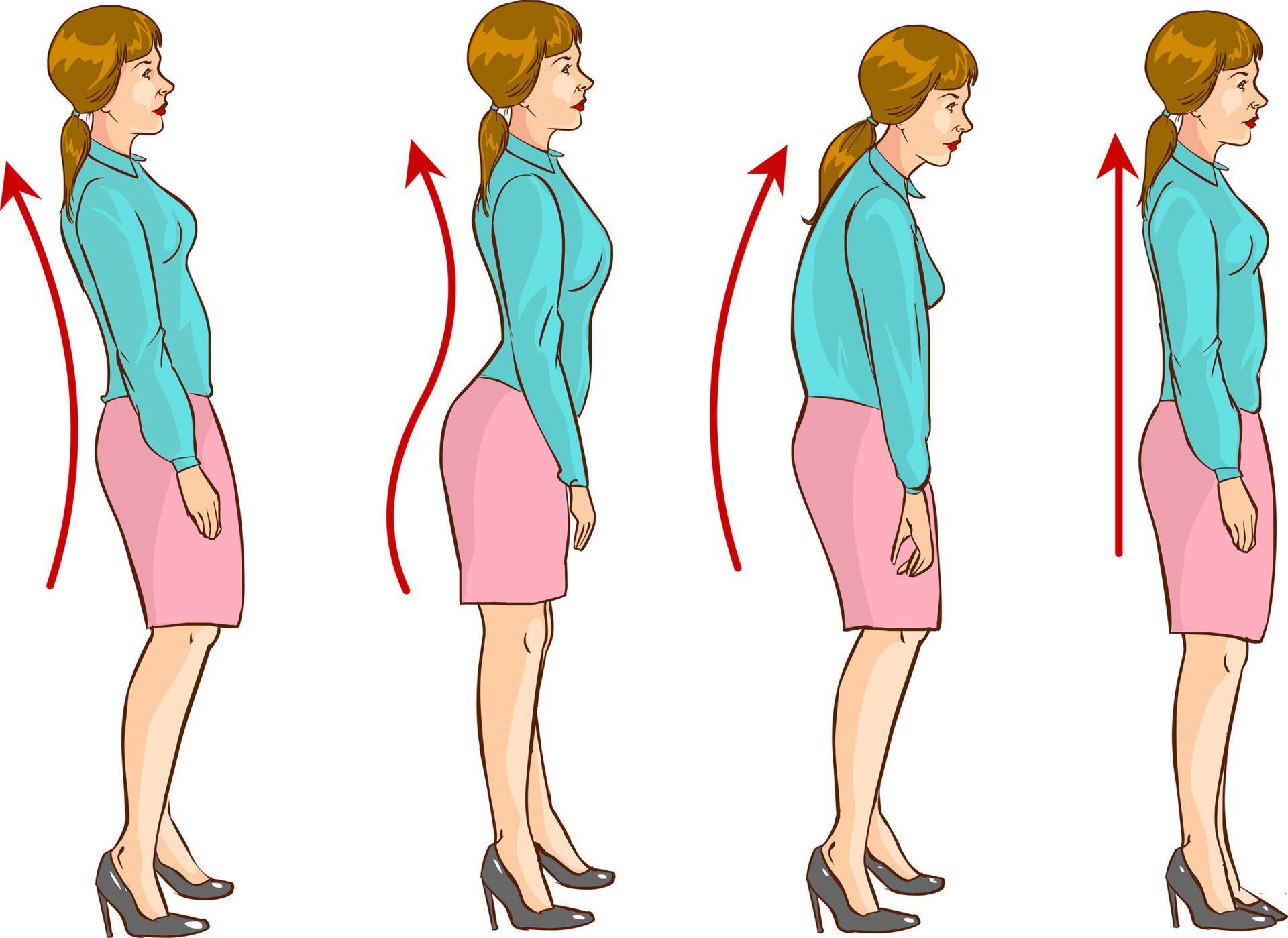How to improve your posture
How to improve your posture

What is good posture?
Posture is how you sit or stand. It means your body is positioned correctly and the weight is evenly balanced so that the skeleton, muscles and ligaments aren’t overstretched or strained.
Good posture makes sure your spine has three curves and the muscles on each side of the spine are strong and well balanced. It will prevent pain in your back, make you more mobile and less tired.
Good posture doesn’t mean standing stiff to attention. It means you are loose and flexible with your:
- back straight
- head up, chin in and looking straight ahead
- tummy in
- weight balanced evenly on your two feet
- knees straight
- Make sure you are relaxed and keep breathing.
When you are sitting, your back should be against the back of the chair and your knees should make a right angle, with your feet on the floor. It’s important not to cross your legs.
What causes poor posture?
Problems with posture can also be caused by conditions that weaken one or more of the structures that support the body, which include the spine, back muscles, hips, shoulders, neck, and the abdominal wall.
In some cases, people are born with genetic conditions that affect the shape of the spine and hips and can influence posture from birth. Such conditions can be managed to minimise the harmful effects they can have on posture over time.
In other cases, injuries from sports or other activities can affect posture as the body protects itself from more injury, such as by limping when you have hurt your foot.
Often, our posture changes as a result of the work we do, or other activities that lead to overuse of different parts of the body.
Underuse can also be a problem. For example, weak back muscles on either side of the spine, or in the abdominal wall at the front of our bodies can affect our ability to maintain a good posture.
For many people, sitting for many hours each day year in and year out causes muscles and ligaments to tighten or become weaker. This can also lead to poor posture.
General tips to improve your posture
- Exercise regularly — even a brisk walk for 10 minutes a day will help you improve your general health and your posture by keeping your body supple and active.
- Do gentle exercises such as those in yoga and Pilates to help strengthen the support muscles in your back and stomach and improve your posture. Concentrate on strengthening the muscles in your core (torso and pelvis).
- Spend 10 minutes a day doing simple stretching exercises.
- Stand tall, which means straightening your spine, moving your shoulders down to their natural resting position and breathing in to tighten your stomach muscles.
- Do simple head movements to help loosen tightened neck muscles that can interfere with good posture. Try gently moving your head in small circles, or from front to back and side to side.
- Lie flat on the ground for two to three minutes once a day without using any cushions or support and relax to allow your body to readjust to its natural resting position.
- Wear flat, well-fitting shoes to assist with even weight distribution.
- Make sure you lift using your hips, knees and thighs, not your back.
How to improve your posture at home
Try not to cross your legs when seated as it can overstretch one side of your leg muscles and change the alignment of your spine over time, particularly if you always cross your legs the same way.
Don’t spend too long sitting on low-seated sofas or very soft chairs.
When sleeping, try to use a single firm support pillow to prevent neck pain developing. It’s best to lie on your side with your knees bent. Make sure you also have a supportive mattress.
Take care when carrying heavy bags of books, computer equipment or shopping. Make sure that you distribute the weight of your bags evenly on either side of your body. A backpack can distribute weight evenly over your shoulders.
If you are a carer and spend a lot of time lifting, pushing or carrying the person you care for, make sure you look after your own posture by undertaking such physical activities correctly.
How to improve your posture at work
When seated, keep your back straight, try to keep your knees and your hips level, and your feet flat on the ground. You may need a footrest to keep your hips and knees level. If you sit for long periods you should support your lower back against the back of your chair, such as with a small rolled up towel, or commercial product.
Avoid sitting in a hunched position for long periods of time, such as when using a laptop or desktop computer. Make sure you get up and move around at regular intervals to alter your body position.
If your job involves lots of repetitive tasks or lifting and bending, ask your employer about training in the correct way to lift and carry heavy or bulky, awkward objects.
If you spend a lot of time on the telephone, you run the risk of phone strain. You may find a headset is more comfortable than resting a telephone on your shoulder and twisting your neck to keep the phone in place.
How to improve posture when driving
Make sure your car seat and headrest are in the correct position to promote safe, comfortable driving.
The steering wheel should be adjusted so it’s level with your chest, not your face. Keep your arms bent and your thumbs on the rim of the steering wheel. Have the seat fairly upright so your back and shoulders are supported and sit deep in the seat, bracing your body with your left foot.







